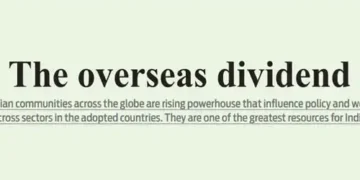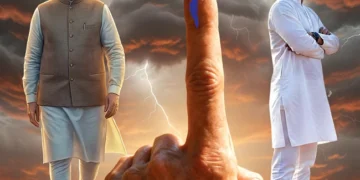K Srinivasan
NOW here’s the takeaway: the Google antitrust case in the District of Columbia was heard by Judge Amit P Mehta (born in Patan in Gujarat) with some of the main testimony being provided by Satya Nadella who heads Microsoft that owns Google’s principal search engine rival, Bing. Nadella, son of an IAS officer was raised in Hyderabad and went on to fulfil the great American dream in Silicon Valley.
And the defendant was Sundar Pichai, born and raised in Chennai and now the head of Alphabet Inc, the parent company of Google. But why should it be surprising? As the New York Times reported in July, “It comes alongside another first for Indian Americans: They recently surpassed Chinese Americans to become the largest Asian group in the United States among people who identify with one country of origin, according to a census report released last year.”
White House ladies
The newspaper then went on to say, “When Senator JD Vance became Donald J Trump’s running mate … on the Republican presidential ticket, it also marked the first time that an Indian American and practising Hindu, Usha Vance, stood to become a vice-presidential spouse. That cemented a remarkable reality: at the current moment, a woman of Indian descent will either serve another term in the White House or be the second lady…. ……. And there are now five Indian American members of Congress and nearly 40 Indian Americans in state legislatures — the highest number of any Asian origin group in the country, according to AAPI Data, an organization that collects data about Asian Americans.” And not to leave out two Presidential candidates of Indian origin in the Republican primary field—Niki Haley and Vivek Ramaswamy.
But what is happening in the US, in terms of rising diaspora clout both within industry and politics, is slowly being replicated across the globe. As the BBC reported, “with full-time employees earning a median monthly wage of €4,974 (£4,253; $5,416), Indians now rank as the top immigrant earners in Europe’s largest economy…. according to the UN, around 18 million Indians now live overseas, in places including North America, Europe, the Middle East and other parts of Asia, such as Malaysia and Singapore. Economists say that amid this growth, the economic power of Indians has spread beyond their native borders, leaving a major global economic mark. …According to the Reserve Bank of India, the bank accounts of non-resident Indians (NRIs) held in the country received $7.99bn (£6.27bn) between April 2022 and March 2023 – more than twice the $3.23bn (£2.54) in the prior fiscal year.’’
Indians in the Gulf In the Gulf, it is a similar story. The Indian community in the Gulf Cooperation Council (GCC) countries is close to around 8.5 million and one of the most influential and largest diaspora segments. What is unique about this Indian community is its discipline, relatively crime-free persona, and widely spreadout matrix in terms of the professions – from blue-collar workers to highly skilled professionals and globetrotting industrialists, the diaspora has them all. In each of the GCC countries, they are the number one expat. What is also helping this expat community is the fact that India has absorbed an enormous number of foreigners across multiple industries over the last decade.
Salaries in India match and sometimes excel what one can make overseas which is what draws educated men and women across Europe and America to come and work in India. Industries in Noida, Greater Noida and across Tamil Nadu, Karnataka, Maharashtra and Gujarat are full of these expats.
It is an interest that is only bound to grow over the years. It is also inevitable that Indians, both in North America and Europe, will work overtime to expand their political reach. One of the great positives of the fallout with Canada is the realisation in a large segment of the diaspora that they should not allow any one segment to run away with the narrative or the political muscle power.
They are seeing the consequences in Canada and having learnt from it will ensure that it is never repeated. Indian leaders also realise their strength, and that’s why they woo them assiduously every time they’re overseas
































